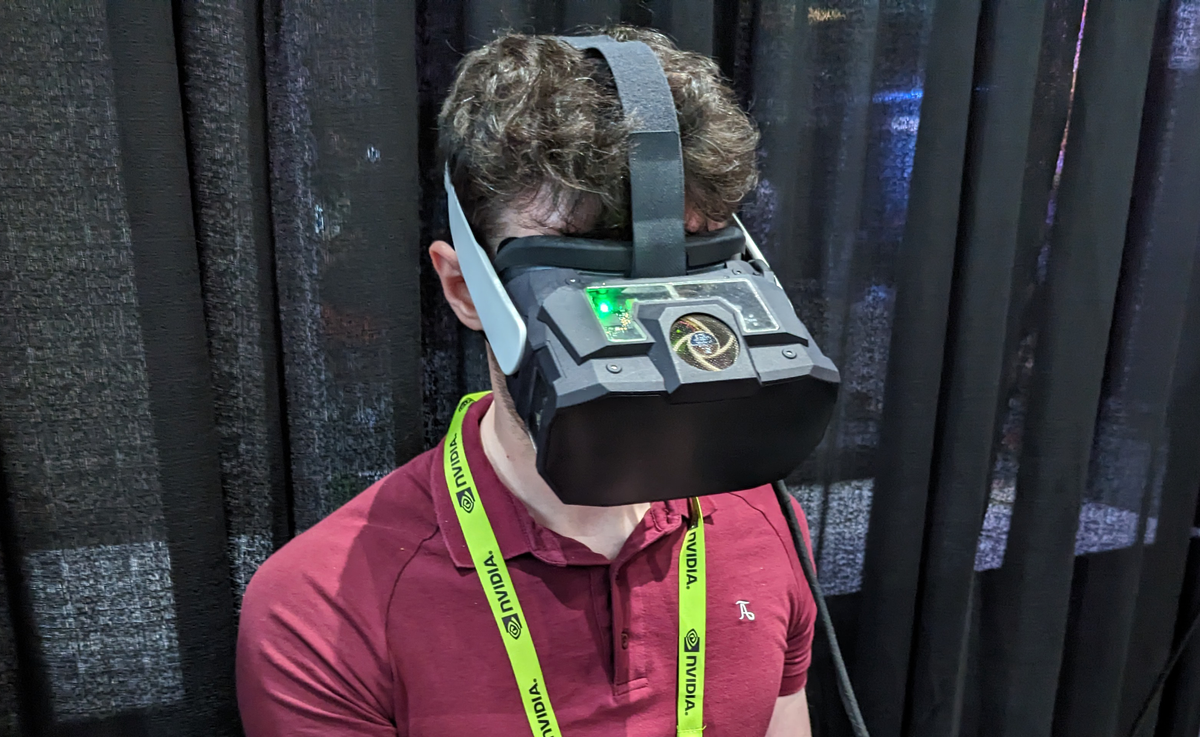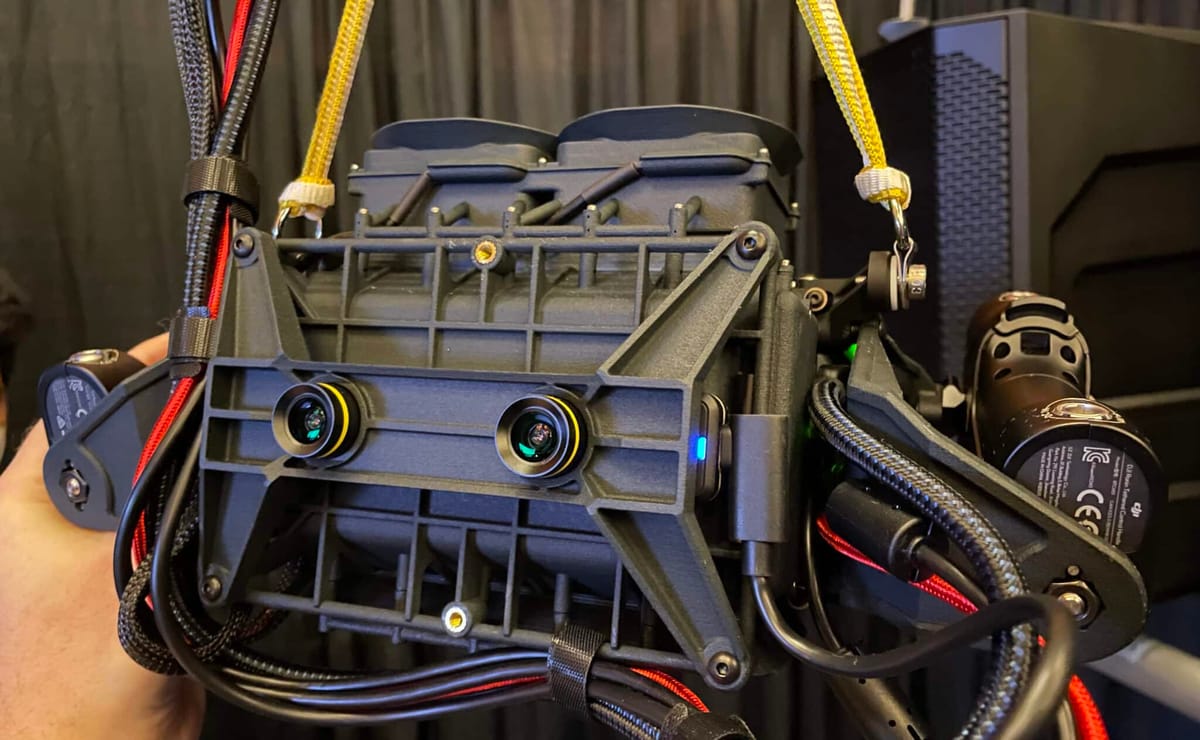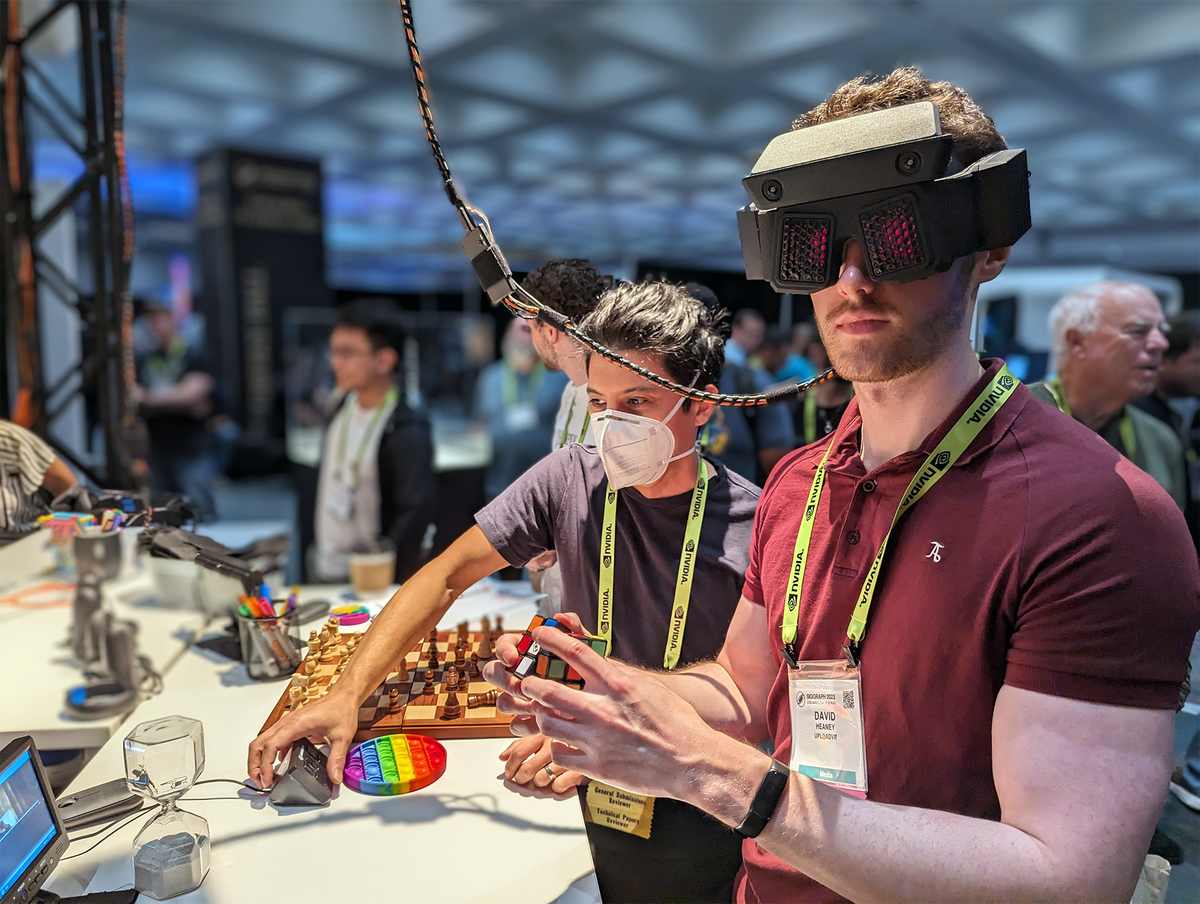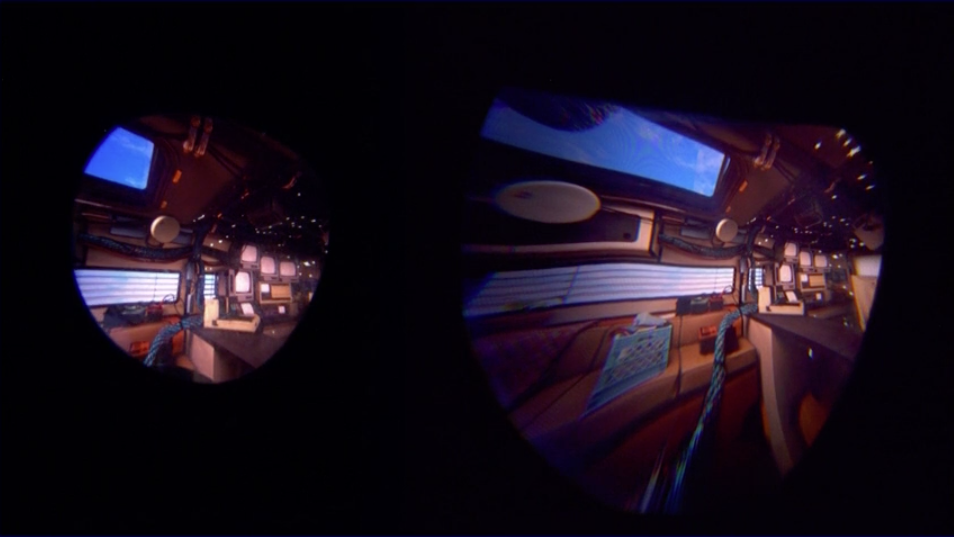Meta CTO Andrew Bosworth shared photographs from a current go to to the corporate’s analysis labs.
In one of many six photographs that have been shared to Instagram and Threads, Bosworth is seen holding a tethered headset that seems to have canted lenses and a large curved physique extending past the strap arms horizontally, suggesting a large subject of view.
The opposite 5 photographs present a Ray-Ban Meta glasses prototype, Undertaking Aria analysis glasses connected to a Quest 3, a silhouette showing to be him carrying a headset, and two pictures of him sitting with Meta’s Chief Scientist Michael Abrash, who leads Actuality Labs Analysis.
“Visiting our analysis labs is at all times a spotlight. They’re making unbelievable progress on laborious technological issues and I can’t wait to share extra“, Bosworth wrote on Threads.
Meta has been way more open about exhibiting off its long-term {hardware} analysis than different massive tech firms, a convention carried over from Oculus, the startup it acquired and became its Actuality Labs division.
In recent times Meta has offered, and even demoed to us, prototype headsets that introduce a brand new characteristic or push a specification to the acute, corresponding to retinal decision, varifocal, extremely brilliant excessive dynamic vary, and reprojection-free depth right passthrough.
Meta says it makes use of these prototype headsets to check how impactful these options and specs are, utilizing the outcomes to tell the way it prioritizes which options to push in future merchandise.
Arms-On: Meta’s Retinal Decision Varifocal Prototype
We tried Meta’s Butterscotch Varifocal prototype which has dynamic focus, retinal decision, and dynamic distortion correction. Learn our impressions right here:

Starburst: Eyes-In With Meta’s 20K Nit HDR Show Tech
Is high-dynamic vary (HDR) the important thing to subsequent technology VR shows? Arms-on time with Meta’s newest demo and an interview with the pinnacle of show programs analysis suggests it’ll be fairly key. Learn on for particulars. On the current SIGGRAPH convention in Vancouver David Heaney and I went

Arms-On: Meta’s Reprojection-Free Passthrough Prototype
At SIGGRAPH 2023 we tried Flamera, Meta’s analysis prototype of reprojection-free passthrough AR. Learn our impressions & ideas right here:

One specification we’ve not seen a Meta prototype considerably push ahead for six years now although is subject of view, arguably crucial specification for immersion. Again in 2018 the corporate confirmed off the unique Half-Dome headset which, in addition to having varifocal optics, it mentioned had a subject of view of 140 levels.
For reference, many of the firm’s shipped headsets have had a subject of view of just below 100 levels horizontal, whereas Quest 3 achieves round 110 levels and Quest Professional achieved just below that.
Subsequent variations of Half-Dome had a smaller subject of view than the unique, with Half-Dome 2 specializing in compactness and Half-Dome 3 transferring to an digital varifocal strategy with no transferring elements. Till now, we hadn’t seen any Meta prototype showing to have a large subject of view once more.

In 2022, when Quest 2 was the corporate’s solely headset available on the market, Bosworth was requested how essential he thought advancing subject of view was. He replied that it “hasn’t felt like the fitting tradeoff” up to now, due to the added rendering energy wanted for the additional pixels and geometry, and likewise mentioned that he discovered (presumably referring to inside prototypes) {that a} taller vertical subject of view was extra impactful for him than a wider horizontal subject of view. Valve additionally mentioned this whereas working with HTC to develop the unique Vive, explaining that having the ability to see the ground in VR strongly contributed to the sensation of presence.
Apparently, one 12 months later Meta launched Quest 3, which has a wider horizontal subject of view than Quest 2 however the identical vertical.
Extra just lately, when requested to explain the Quest headset of the early 2030s in an interview in July, Bosworth reaffirmed his view {that a} taller subject of view was extra essential than a wider one, suggesting this will probably be Meta’s focus sooner or later.
Meta’s CTO Predicts The Specs Of A 2031 Quest Headset
Andrew Bosworth described the decision, subject of view, refresh charge, weight, and audio answer he expects a Quest headset to have in 2031.


